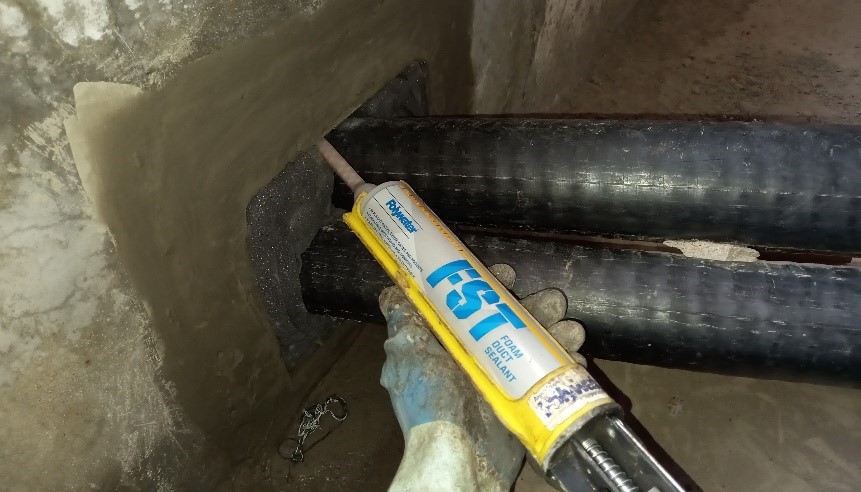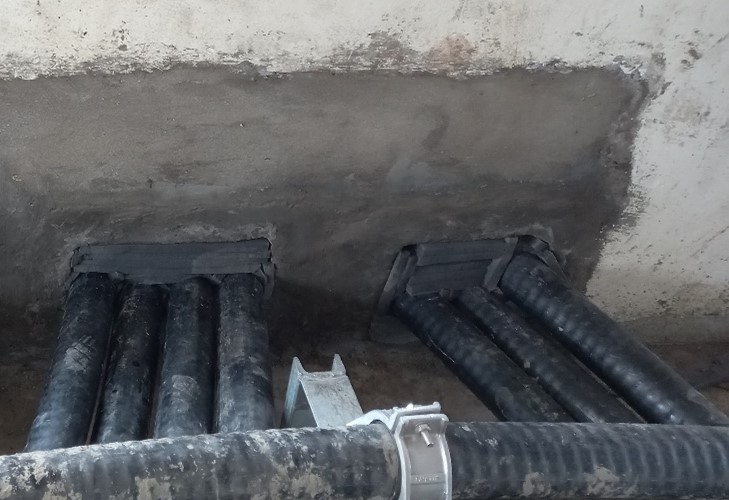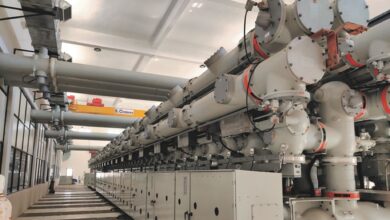Cable Entry Sealing at Mumbai Metro

The Challenge
A metro company in Mumbai expected that its new receiving station (GIS) was going to experience severe flooding if four power cable entry points were not sealed before the start of the monsoon season. Passing through these entry points were multiple six (6) inch diameter cables.

In Mumbai, heavy rains and water leakage into the basements of many buildings are common problems. Located in the basement of the receiving station, these cable entry penetrations would be a conduit for water to enter the facility. Design engineers in Mumbai plan for minor flooding. The designers of this project were not from Mumbai and were unfamiliar with the leakage issues. Because of increased uncertainty about future levels of rainfall and increased power costs to pump higher volumes of water, the maintenance head at this facility needed a better solution: One that would provide a watertight seal for the lifetime of the facility.
The Solution
The O&M Manager at the metro facility was told by a Power Utility in Mumbai of a new way to seal these openings using an innovative sealing system that had begun to be used in India in recent years: FST Expanding Foam from Polywater Corporation. FST is designed to protect mission critical electrical and telecommunications systems from water, gases and other unwelcome intrusions. It supports up to 6-7 metres of water head pressure and is used extensively in the Americas, Europe and Oceania.
To understand more about FST, the maintenance manager met with LeakXpert who introduced the product into the Indian market. LeakXpert is a professional subcontractor with years of experience in the repair of transformer oil, water and gas leaks in power and industrial installations throughout India. After these discussions, the manager specified that FST be used to protect the metro facility from flooding.
To create the water-tight seal required for this application, a series of flame retardant foam strips were positioned in each cable entry opening to create an empty volume inside the wall. The foam strips would contain the liquid resin injected into these voids to allow the resin to expand and harden.
The photo below (left) shows two of the wall penetrations after the foam containment strips were applied.


Once in place, the FST was injected into the empty space created between the foam strip barriers. The FST resins are injected from a caulk-style 250 ml cartridge. They are mixed thoroughly through a mixing nozzle that is supplied with each cartridge. Once mixed, the resins begin to expand and form a robust cell structure which stops not only water, but gases and rodents too. The photo (right) above shows the resin being injected into the empty space behind the foam strips to completely seal the cable entry point.
Result
Polywater FST has shown to be an innovative sealing technology that effectively reduces the risk of water damage to GIS facilities. Resisting high water head pressure and easily applied into tight or intricate spaces common to many cable-entry points in electrical installations, FST passed the most important test of all; its first monsoon season. In doing so, it protected the valuable electrical system assets of this receiving station and provided interrupted electrical service to the metro station.




